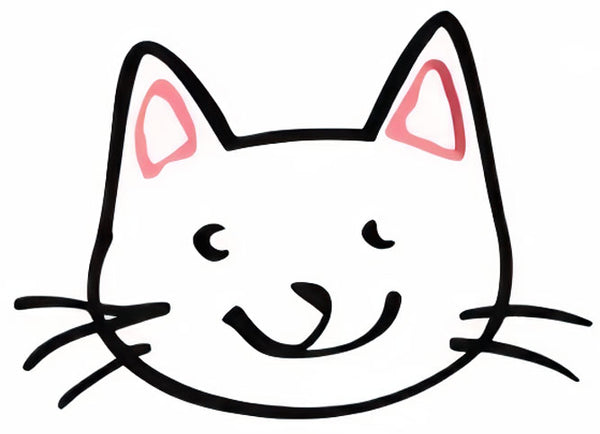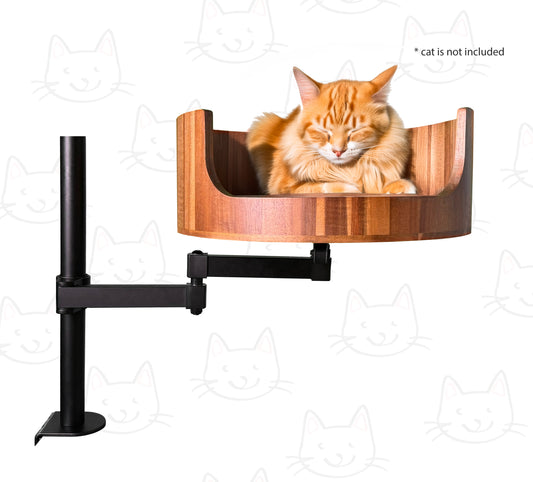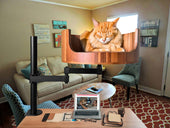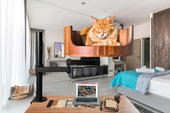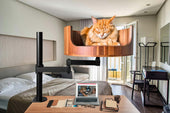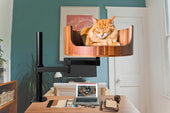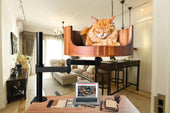
What Does a Cat Wagging His Tail Mean? Understanding Behavior
Share
If you're a cat owner, you've probably witnessed your feline friend wagging their tail at some point. While many people associate tail wagging with dogs, cats also use this form of communication to express their emotions. Understanding what a cat's tail wagging means can be crucial in interpreting their behavior and responding appropriately. In this article, we will delve into the various reasons behind why cats wag their tails and what each type of wagging may signify.
From playful flicks to agitated swishes, a cat's tail can reveal a lot about their current mood and intentions. By observing the nuances of their tail movements, you can gain valuable insights into your cat's feelings and address any potential issues before they escalate. Whether your cat is happily greeting you at the door with a gentle curve of their tail or angrily lashing it back and forth when feeling threatened, knowing how to interpret their body language can strengthen the bond between you and your furry companion. Stay tuned as we uncover the mysteries behind cat tail wagging and help you better understand your pet's behavior.
1. Cat tail wagging can indicate a range of emotions, from excitement to irritation or aggression.
2. Observing the rest of the cat's body language can help determine the true meaning behind tail wagging.
3. Slow, deliberate tail movements typically signal contentment, while rapid and aggressive wagging may indicate discomfort or anger.
4. Tail position, height, and overall body posture should also be taken into account when interpreting a cat's behavior.
5. It is important for cat owners to pay attention to their pet's tail movements in order to better understand and respond to their feline companion's feelings.
## Understanding Cat Tail Wagging
When a cat wags its tail, it can communicate a variety of emotions and intentions. It is crucial to pay attention to the context and other body language cues to decipher the message your feline friend is trying to convey through tail movements.
## Tail Wagging as a Sign of Agitation
One common interpretation of a cat wagging its tail is that the feline is feeling agitated or frustrated. This behavior may be accompanied by other signs of distress, such as flattened ears, dilated pupils, and a twitching body. In such cases, it is best to give the cat space and avoid provoking it further.
## Tail Wagging as a Sign of Playfulness
In some instances, a cat may wag its tail as a playful gesture. This type of tail movement is typically more relaxed and rhythmic compared to agitation-related tail wagging. The cat may engage in playful behaviors such as pouncing, chasing, or hopping around while wagging its tail in a friendly manner.
## Tail Wagging as a Sign of Social Interaction
Cats also use tail wagging as a form of social communication with other felines or even their human companions. When a cat approaches someone familiar while wagging its tail, it may be seeking attention, affection, or simply initiating a friendly interaction. Understanding the context and the cat's overall body language can help determine the underlying message behind this type of tail wagging.
## Tail Wagging as a Sign of Fear or Anxiety
In some cases, a cat may wag its tail as a response to fear or anxiety. The tail movement in this context may be rapid, erratic, or accompanied by other signs of stress, such as crouching, hiding, or excessive grooming. It is important to create a calm and safe environment for the cat to help alleviate its anxiety and reduce the frequency of tail wagging as a stress response.
## Tail Wagging as a Sign of Aggression
Lastly, tail wagging can also indicate aggression in cats. When a cat wags its tail while showing signs of aggression, such as hissing, growling, or baring its teeth, it is best to avoid provoking the cat further and give it space to calm down. Seeking professional help from a veterinarian or animal behaviorist may be necessary to address aggression-related tail wagging in cats effectively.
Frequently Asked Questions
What does it mean when a cat wags its tail?
When a cat wags its tail, it can have different meanings depending on the context. In general, a cat wagging its tail can indicate that the cat is feeling agitated, irritated, or anxious. It's important to pay attention to other body language cues and the overall situation to better understand what your cat is trying to communicate.
Is a cat wagging its tail always a sign of aggression?
No, a cat wagging its tail is not always a sign of aggression. While it can indicate that a cat is feeling agitated or annoyed, tail wagging should be interpreted in conjunction with other body language signals. For example, if a cat's ears are flat against its head or its body is tense, it may be a sign of aggression. However, if a cat is wagging its tail in a relaxed manner, it may simply be playing or expressing excitement.
How should I respond if my cat is wagging its tail?
If your cat is wagging its tail, it's important to stay calm and try to assess the situation. Avoid approaching or petting your cat if it seems agitated, as this could escalate the situation. Instead, give your cat space and time to calm down. If you're unsure about your cat's behavior, it may be helpful to consult with a veterinarian or animal behaviorist for guidance.
Can the Desk Cat Nest help with understanding my cat's behavior?
The Desk Cat Nest can provide a safe and comfortable space for your cat to relax and observe its surroundings. By providing your cat with its own designated space, you may be able to better monitor your cat's behavior and interactions. While the Desk Cat Nest is not a solution for interpreting tail wagging specifically, it can help create a harmonious environment for you and your feline friend.
In conclusion, understanding the behavior of a cat wagging its tail is crucial for cat owners to address their pet's needs and prevent potential aggression or stress. One valuable choice to help with this behavior is the Desk Cat Bed. This innovative product not only provides a cozy and comfortable space for your cat to relax but also promotes feelings of security and reduces anxiety, ultimately contributing to a happier and healthier feline companion. With the Desk Cat Bed, cat owners can trust that their pet is receiving the care and support they need to thrive.
